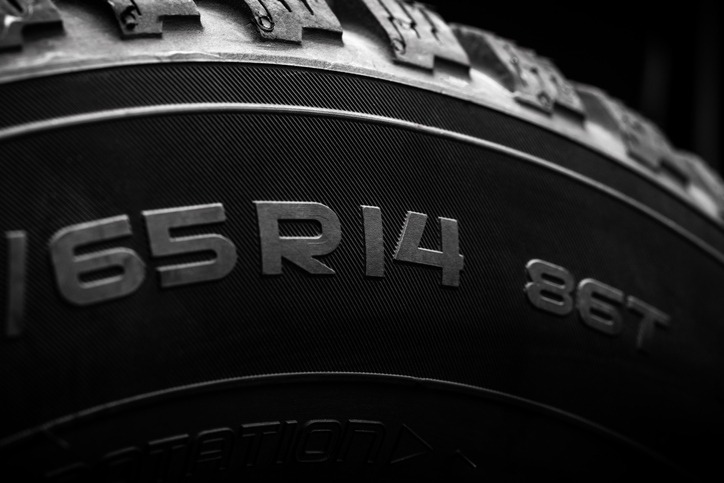If you’ve ever looked at the side of your tire, you may have noticed a series of numbers and letters. That’s your tire size! Along with letting you know what your tires are qualified for (such as mud and snow or all-season tires) the information along the side of your tire informs you as to what size of tire fits on your car, which also gives you insight into what kind of rims would fit your vehicle. But what do those numbers and letters actually mean? Calling your local tire shop for answers is a quick way to get the information you’re looking for – but we’ve got a short article here that might do the trick, too. Let’s break down what every car owner should know about tire sizes.
What Tire Numbers Mean
The first three digits are the tire width in millimeters. This is the width from one sidewall to the other, not the tread width. The number following that letter is called the aspect ratio, which is the height of the sidewall expressed as a percentage of the tire’s width. The letter after that indicates how wide your rim is, measured in inches. The last two digits are the wheel diameter, also measured in inches. Knowing this information can help you select tires that will fit properly on your vehicle.
It’s important to note that there are different types of tires—including all-season, winter, and summer—for different road conditions and temperatures. All-season tires usually come standard on vehicles while winter and summer tires are better suited for specific climates or terrain. All-season tires are meant for moderate weather conditions whereas winter tires provide superior traction during cold weather and snowfall due to their softer rubber compound and specialized tread patterns with biting edges to grip icy roads. Summer tires offer better performance in hot weather with higher speed ratings than all-season tires due to their harder rubber compound construction that won’t wear out as quickly as softer compounds in higher temperatures.
When purchasing new tires for your vehicle it’s important to keep in mind both safety and comfort as well as fuel economy when selecting a brand or type of tire so make sure to do your research before making any purchases. Keep in mind that if you’re ever uncertain about tire-related questions, give your local tire repair shop a call, and they’ll be happy to help you out.
How Tire Size Affects Price
It’s an important question to ask when considering purchasing new tires at your local tire shop: how does tire size affect the price? Tire size plays a major role in determining the cost. The larger the tire, the more expensive it is going to be. This is because larger tires require more rubber and labor to make them, as well as additional resources such as machinery and tools for mounting and repair services. So if you are looking for tires on a budget, then it would be wise to go for smaller tire sizes so you don’t break the bank.
The Most Common Tire Sizes
When it comes to tire sizes, a tire repair shop will usually have a standard selection of tire sizes available. Most regular passenger vehicle tires come in 14, 15 and 16 inch diameters, while trucks, SUVs, and larger vehicles can be equipped with 17 and 18 inch tire sizes. These tire sizes range in width between 195-225mm. With so many different tire sizes available it’s important to check what size tire your vehicle requires before purchasing a tire repair kit or replacing your old tires.
Final Thoughts
Tire size is an important factor when selecting new tires for your vehicle because it must match up with both the wheel diameter and rim width on your car so they fit correctly. There are many different types of tires available depending on climate conditions or terrain so it’s important to do research before making a purchase decision so you can get optimal performance from your new set of wheels. Keep in mind that when you’re making a new tire purchase, some tire sizes are more common than others, and the size of the tire you choose will affect the price. Understanding how to read tire sizes will help you select the right type of tire for your car – and your budget – so you can safely drive wherever life takes you.

